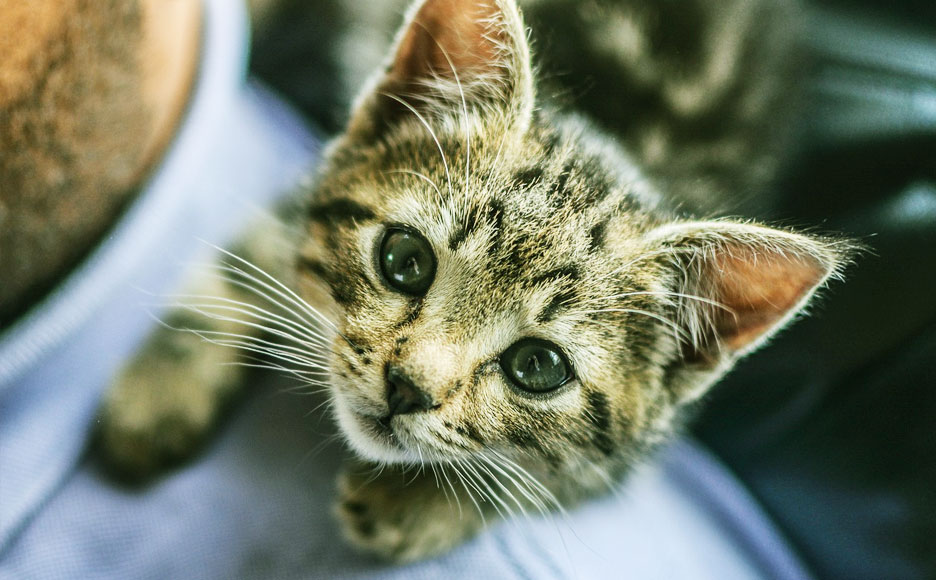How to take good care of your cat?
Last Updated: June 12, 2024
Tweet
Bringing a cat into your household can be a thrilling adventure, yet it involves taking good care of them and ensuring they have a secure, cozy space to flourish. It's crucial as a cat parent to grasp your furry friend's fundamental requirements and set up a schedule that enhances their overall health and happiness.
Regular visits to the vet, grooming sessions, and providing a balanced diet are all part of taking care of your cat. It's important to remember that cats are social animals and they thrive on daily interaction and playtime with their owners. By tailoring your care to meet your cat's specific needs, you can guarantee a joyful, healthy, and satisfying life for both you and your furry friend.
What does the term ‘heat’ denote in cats?
Cats go through a natural but stressful heat cycle every few months starting around 4-9 months old, during which they exhibit loud meowing, rubbing, urinating, and raising their tail to attract mates, which is known as Heat. This can be very disruptive for both the cat and their owner.
While it is a normal part of the feline reproductive process, the behaviors associated with heat can be reduced by spaying the cat, which is the most effective way to prevent heat cycles. Consult your veterinarian about when to spay your cat to avoid these stressful heat periods.
How long does heat last in cats?
The duration of heat in cats is determined by whether or not the cat has been bred. For bred cats, heat typically lasts from two to four days, but if mating with a male cat doesn't occur, the heat period can extend up to 15 days.
Ways to help your cat during heat
Cats in heat can be extremely challenging for their owners to manage due to the disruptive behaviors the cats exhibit. Sadly, there are limited options to alleviate the sometimes very extroverted and vocal conduct of cats during this phase.
Please click here to get the complete details on available programs, volunteer’s roles and activities , accommodation, cost, visa , vaccination, airport arrival and the rest of it.
Get More Info Now »
- Keep male cats away from a female cat in heat, as their presence can excite and reinforce the female's mating behaviors
- Use catnip, which has a calming effect and can relax cats. Catnip-filled toys provide distraction and encourage play
- Provide warmth with a warm grain pillow or low-setting electric blanket to have a soothing, calming effect
- Engage the cat's play drive to divert her energy - scratching posts allow her to extend her claws and release pent-up energy
- Try pheromone products designed to calm cats, though their effectiveness varies
Although these measures can be helpful, the most dependable long-term solution to avoid the stressful heat cycles entirely is by spaying your cat. It's always a good idea to consult with your veterinarian to determine the best time to spay your female cat.
How common is dandruff among cats?
Cats can develop dandruff when their skin flakes during shedding. This may indicate various issues like inflamed skin, vitamin imbalance, or diseases such as scabies, ringworm, or pyoderma. To assist your cat in eliminating dandruff, make sure to brush them regularly and provide a specialized diet that promotes healthy skin.
Way to help your cat with dandruff
If your cat has dandruff but is otherwise healthy, meaning the flaky skin is not caused by an underlying medical issue, there are steps you can take to help resolve it:
- Proper Nutrition: Provide your cat with a high-quality, balanced diet specifically formulated to support healthy skin and coat. A nutritious diet promotes skin cell turnover and improves overall skin and hair quality.
- Consistent Grooming: Make sure to brush your cat on a regular basis to get rid of any dead hair and improve airflow to their skin. This will also help in removing any extra flakes.
- Parasite Prevention: Treat your cat for fleas, lice, and other parasites if they are present, as infestations can contribute to or worsen dandruff problems. Deworming with an appropriate product may also be beneficial.
- Monitoring Skin Health: If your cat's dandruff continues for several days and returns even after brushing, it's important to carefully inspect the skin under the fur for any abnormal discoloration or changes. Make sure to take note of any concerns you have so that you can discuss them with your veterinarian.
By addressing dietary needs, maintaining a regular grooming routine, and controlling parasites, you can often successfully manage dandruff in otherwise healthy cats. However, if the condition is severe or accompanied by other symptoms, veterinary evaluation is recommended to rule out any underlying medical causes.
How often do cats have their hair fall?
While noticeable hair loss in cats can be concerning, especially for new pet owners, it is often a normal and common occurrence due to the abundant, fluffy nature of a cat's fur. Cats tend to shed more heavily during the spring and fall seasons as their bodies physiologically adapt to temperature changes, a natural climate adaptation strategy.
Excessive shedding or hair loss, along with other behavioral changes such as excessive scratching or licking, may signal an underlying health problem. It's a good idea to seek advice from a vet if you notice unusual shedding. On the other hand, finding cat hair around the house, especially in their favorite resting spots, is just a normal part of having a furry friend.
Ways to help prevent hair fall in your cat
To address hair loss in cats, it is essential to consider various factors contributing to the issue. Ensuring your feline companion receives a balanced diet rich in essential nutrients like omega-3 and omega-6 fatty acids can promote a healthy coat and reduce excessive shedding. Some additional preventions to be considered are as follows:
- Opting for grain-free dry cat food and incorporating wet food into their diet can provide additional nutrients and benefits.
- Regular brushing is crucial for keeping your cat's coat tangle-free and minimizing loose hair, especially for long-haired breeds like Angoras or Persians. Using appropriate grooming tools like a furminator, card, and comb can help prevent tangles, knots, and dirt buildup, contributing to overall coat health and hygiene.
- Maintaining parasite control through the use of antiparasitic products is vital in preventing hair loss caused by fleas and other parasites.
- Creating a comfortable and stress-free environment for your cat is also crucial, as stress can be a significant factor in hair loss.
- Providing mental stimulation through interactive toys and ensuring access to quiet resting areas can help alleviate stress and promote overall well-being, while physical activity can be beneficial during stressful times.
By addressing these factors and following these recommendations, you can help manage and potentially reduce hair loss in your cat while promoting their overall health and happiness.
How to check whether your cat is Overweight or Obese?
To determine the body fat percentage of your feline companion, the initial step involves identifying their chest circumference. Proceed by gently tracing your fingers along their ribcage until you locate the 13th rib, then proceed to the 9th rib. Subsequently, wrap a tape measure loosely around their chest.
In case your cat has lengthy fur, it is advisable to deduct 2 cm from the obtained measurement. If you can easily discern their ribs, your cat likely maintains a healthy weight. Conversely, if feeling their ribs proves to be challenging, this may suggest that they are carrying excess weight. To accurately evaluate their weight, it is recommended to weigh your cat and compare their weight to the standard weight designated for their specific breed.
Ways to help your cat lose weight
- Establish a Consistent Feeding Routine: Remember to accurately measure your cat's food portions daily instead of just using a food cup. Split the total amount into multiple small meals, since cats usually eat 10-15 times a day. Offer small servings of fresh wet food, as it has lower energy density compared to dry food. Swap out treats for quality playtime and affectionate cuddles with your feline friend.
- Encourage Daily Activity and Monitor Progress: Make sure your cat gets plenty of exercise every day by giving them interactive toys to play with when you're not around. Don't forget to set up regular check-ins at the vet to monitor your cat's weight loss journey. When your cat reaches their goal weight, think about switching them to a special low-calorie diet made for neutered cats to keep them healthy and fit.
Following these practical tips and working closely with your veterinarian can help your cat safely and effectively lose excess weight and maintain a healthy body condition. Consistency, portion control, and encouraging activity are key to success.
Conclusion
Taking care of your cat's diet, grooming, health, and safety is crucial for their well-being. Not only does it benefit your feline companion, but it also brings peace of mind to you as their owner. Following these guidelines will help ensure that your cat stays healthy, happy, and well-cared for.
Please click here to get the complete details on available programs, volunteer’s roles and activities , accommodation, cost, visa , vaccination, airport arrival and the rest of it.
Get More Info Now »










